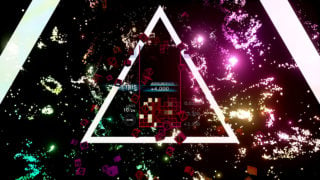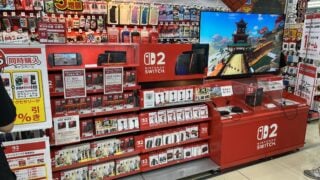Mizuguchi confirms next-gen project and says Rez Infinite was ‘a prologue’
Tetris Effect designer wants to explore 3D audio and haptics on new consoles

Rez and Tetris Effect creator Tetsuya Mizuguchi has confirmed he’s started work on a synaesthesia-style game for next-gen consoles, and described it as a follow-up to Rez Infinite’s Area X level.
Synaesthesia, which is the concept of mixing together senses such as sight and sound, has been the basis for all of Mizuguchi’s recent games including Lumines, Child of Eden and Tetris Effect: Connected – a multiplayer update released alongside Xbox Series X/S.
Speaking to Famitsu in a new interview, the Enhance CEO said he felt there was more to come from the concept, especially with the 3D audio and haptic features of PlayStation 5.
Mizuguchi also said that the new Area X level created for 2016’s Rez Infinite would act as a “prologue” for his next game.
“We are very good at weaving music and sound into visual and tactile experiences in our game designs, so that we can take an interesting game and turn it into an even more impressive game,” he said. “I’d like to raise the level of excitement to a higher level by increasing the granularity of what comes next after Rez Infinite or after Tetris Effect.
“In order to achieve this, the evolution of VR technology is very important, and resolution is also important. In other words, there are various levels of granularity, aren’t there? I’d like to see that improve.
“Of course, the next generation of consoles came out at the end of last year, so we would like to develop the next games for the new generation, and we have actually started working on projects.

“In particular, Area X in Rez Infinite was developed as a ‘prologue’ to the next game, and we hope to use that concept in the next generation of games. With the concept and XR technology, we’d like to increase the overall resolution and create a more detailed game.”
On next-gen consoles, Mizuguchi said the technology was catching up with his ideal vision of what a synaesthesia game should be like, and this went beyond just visual resolution.
“Of course, there is the resolution of images, but there is also the resolution of sound,” he said. “For example, sound also has a resolution, and the way we used to think of sound was as stereo, but now it’s being viewed as spatial audio.
“When you think about the pattern of sounds coming from various directions in a space, and harmonizing them to form a piece of music, it becomes a different dimension from simple stereo sound. Everything becomes spatialized. Everything becomes 3D, and the increase in granularity and resolution shakes or changes the experience itself.”
He added: “When haptics (tactile technology) is added to the mix, the total integrated experience of visuals, sound, and tactile sensations is not just multiplied, but multiplied by a factor of several. When that happens, things start to happen that in the past would not have felt like this in a game. We believe that we can make it happen, and we’re climbing the stairs one by one.”
In a 2019 interview, Mizuguchi told VGC that Tokyo, Japan-based Enhance was well positioned to create games for next-generation consoles, and welcomed the news that PSVR would be compatible with PlayStation 5.















